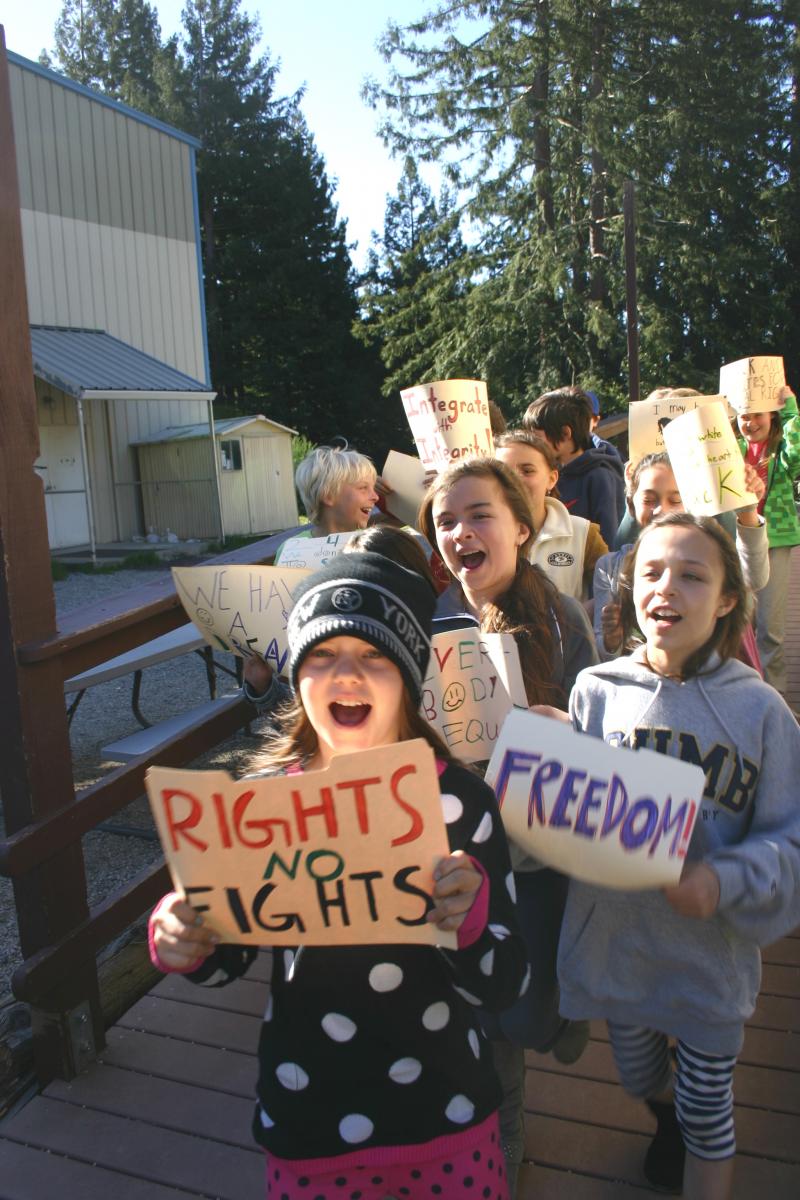 As students in Linda Pope’s fourth grade class watched a slideshow about the American Civil Rights Movement, the historical images — some inspiring and others disturbing — included a clip featuring American folk singer and activist Pete Seeger signing the Baptist hymn We Shall Overcome. As the students listened, they spontaneously began joining in, singing along aloud — apparently inspired by the raw emotion of the voices that filled their classroom.
As students in Linda Pope’s fourth grade class watched a slideshow about the American Civil Rights Movement, the historical images — some inspiring and others disturbing — included a clip featuring American folk singer and activist Pete Seeger signing the Baptist hymn We Shall Overcome. As the students listened, they spontaneously began joining in, singing along aloud — apparently inspired by the raw emotion of the voices that filled their classroom.While these children have no first-hand experience with the Civil Rights struggles of the 1950s and 60s, this didn’t hinder them from discussing these issues and the personal experiences that guest presenter Dr. Simone Matteucci, Ph.D, brought to their Mount Madonna School (MMS) classroom on a recent morning.
Matteucci is Pope’s mother and a retired high school history teacher with more than 40 years of classroom teaching. She also has first-hand experience with discrimination and civil rights struggles, some of which she shared with students during a couple hours of stories, slides, singing and even a simulated civil rights march designed to give students a sense of what that activity could feel and sound like.
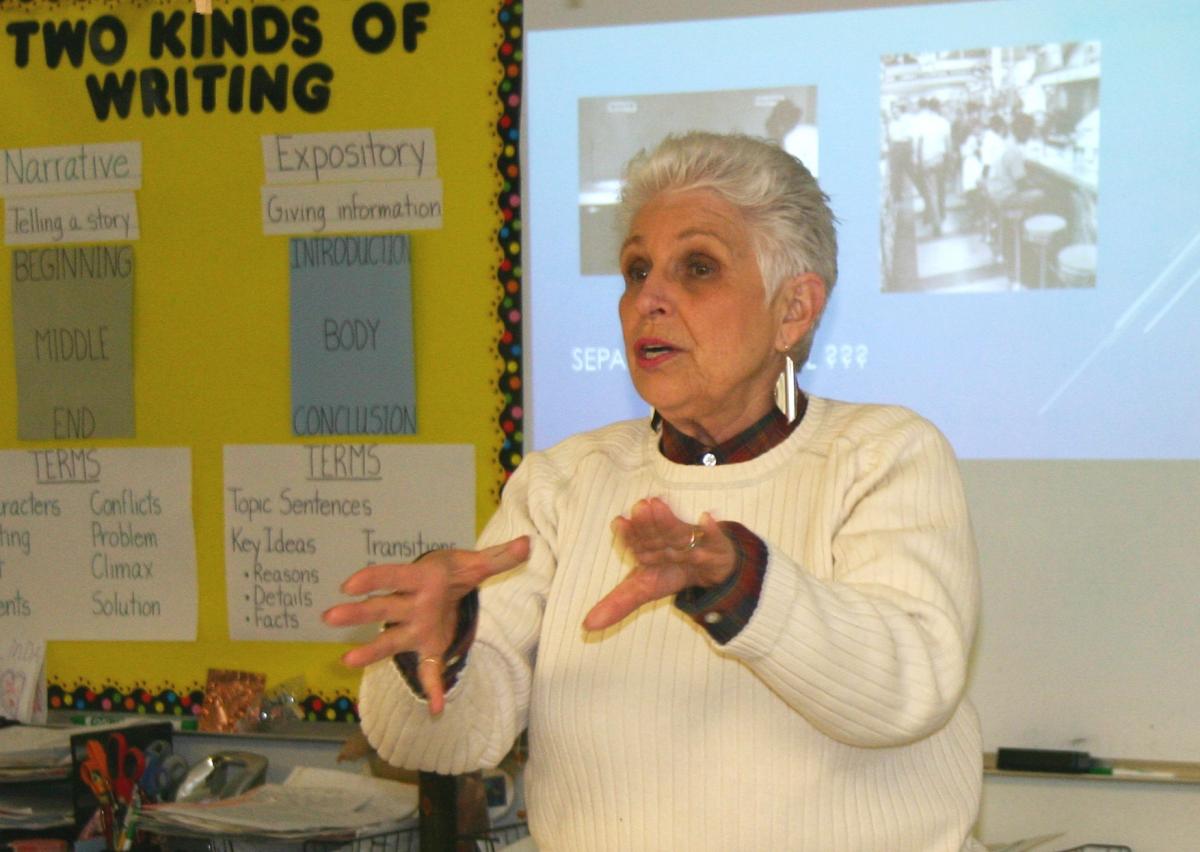 ‘Discrimination,’ said Matteucci. ‘Let’s say it and get it out there. We’re talking about not liking people because they are different, like a different race or skin color or maybe a different religion. You don’t come into the world believing this way, you have to learn it. ‘
‘Discrimination,’ said Matteucci. ‘Let’s say it and get it out there. We’re talking about not liking people because they are different, like a different race or skin color or maybe a different religion. You don’t come into the world believing this way, you have to learn it. ‘As a student at Hempstead High School on Long Island in 1954, Matteucci and her classmates experienced first-hand the affects of the Brown v. the Board of Education ruling, desegregating the nation’s public schools. As the first African American students were admitted to Hempstead. Matteucci recalls meeting a young girl named Irma.
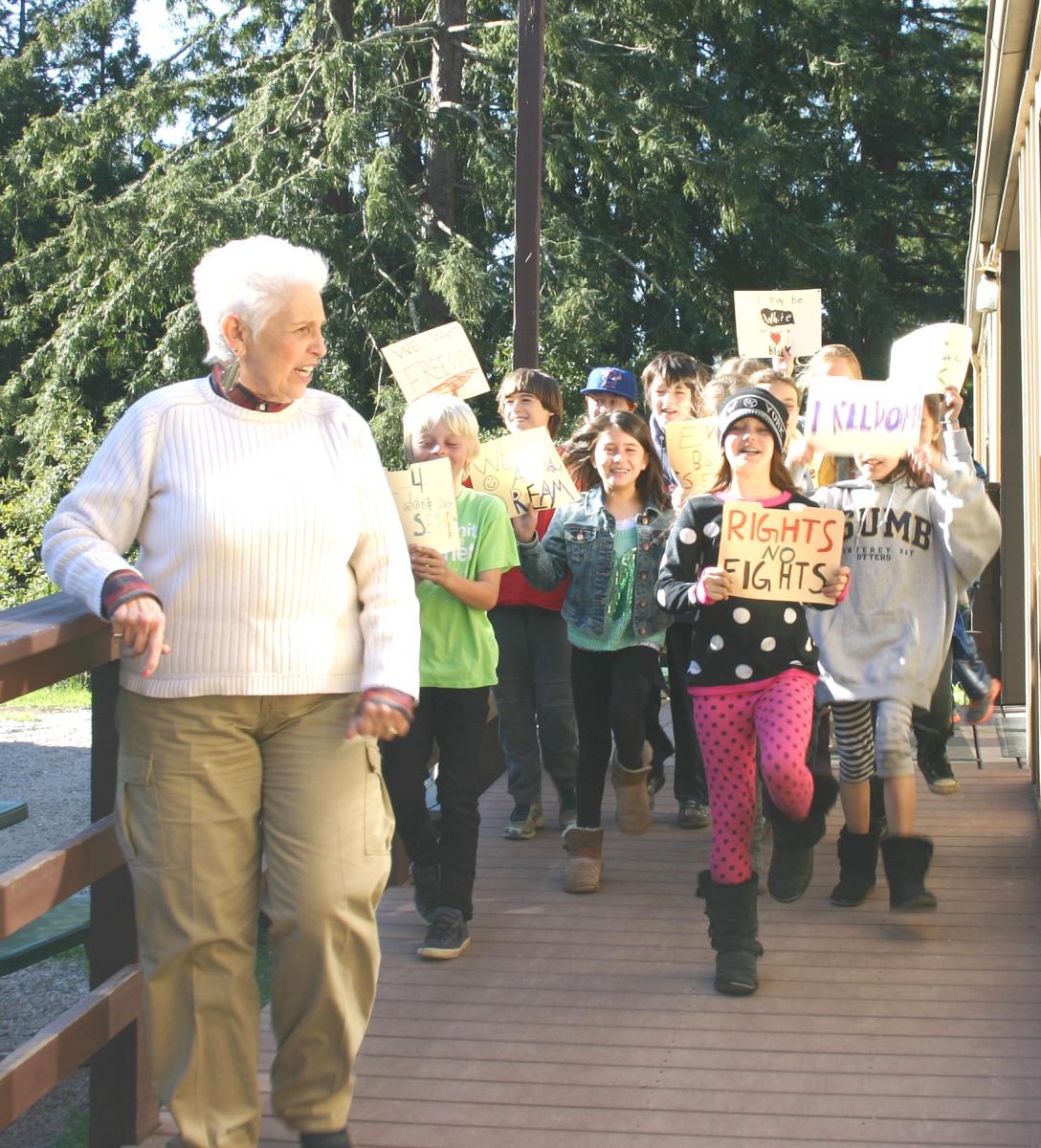 ‘She was scared to come into a white school and I was scared, initially, to have her for my friend,’ explained Matteucci. ‘She became my best friend. We were the same, just different colors. At about age 15 I started to gain a better understanding of the broader toll of segregation, and I knew in my heart that pre-judging people was not right.’
‘She was scared to come into a white school and I was scared, initially, to have her for my friend,’ explained Matteucci. ‘She became my best friend. We were the same, just different colors. At about age 15 I started to gain a better understanding of the broader toll of segregation, and I knew in my heart that pre-judging people was not right.’‘Did all of this start just because of people’s color’ asked fourth grader Sophia Brevis. ‘I would have been super scared to come into a school where everyone else looked different than me. Especially,’ she added, ‘if I wasn’t welcome there.’
Earlier this spring fourth graders did an in-depth study of Australia’s Aboriginal people as part of MMS’ elementary school focus on indigenous cultures. During this curriculum unit, issues of civil rights and civil rights abuses were discussed repeatedly. Pope recognized an opportunity for teaching students about and honoring Black History month with making broader connections to other civil rights movements, including those facing many of the world’s indigenous cultures, Native Americans, and other struggles that occurred in the United States.
‘Learning the truth of the historical and ongoing civil rights struggle is not an easy truth,’ commented Pope. ‘Yet, it is an important one. In a world where empathy seems to be lacking in many places, one goal for this lesson is to teach the kids empathy for others, especially for those who are ‘different’ and not in a strong position to advocate for themselves. By simulating a peace march, my hope is that when faced with real-life decisions the children will remember this lesson with every sense of their being, and choose to honor diversity rather than force conformity. As their teacher, I only have my students for a very brief time, but I hope it’s enough to light a spark that they’ll carry with them and use to kindle more life lessons.’
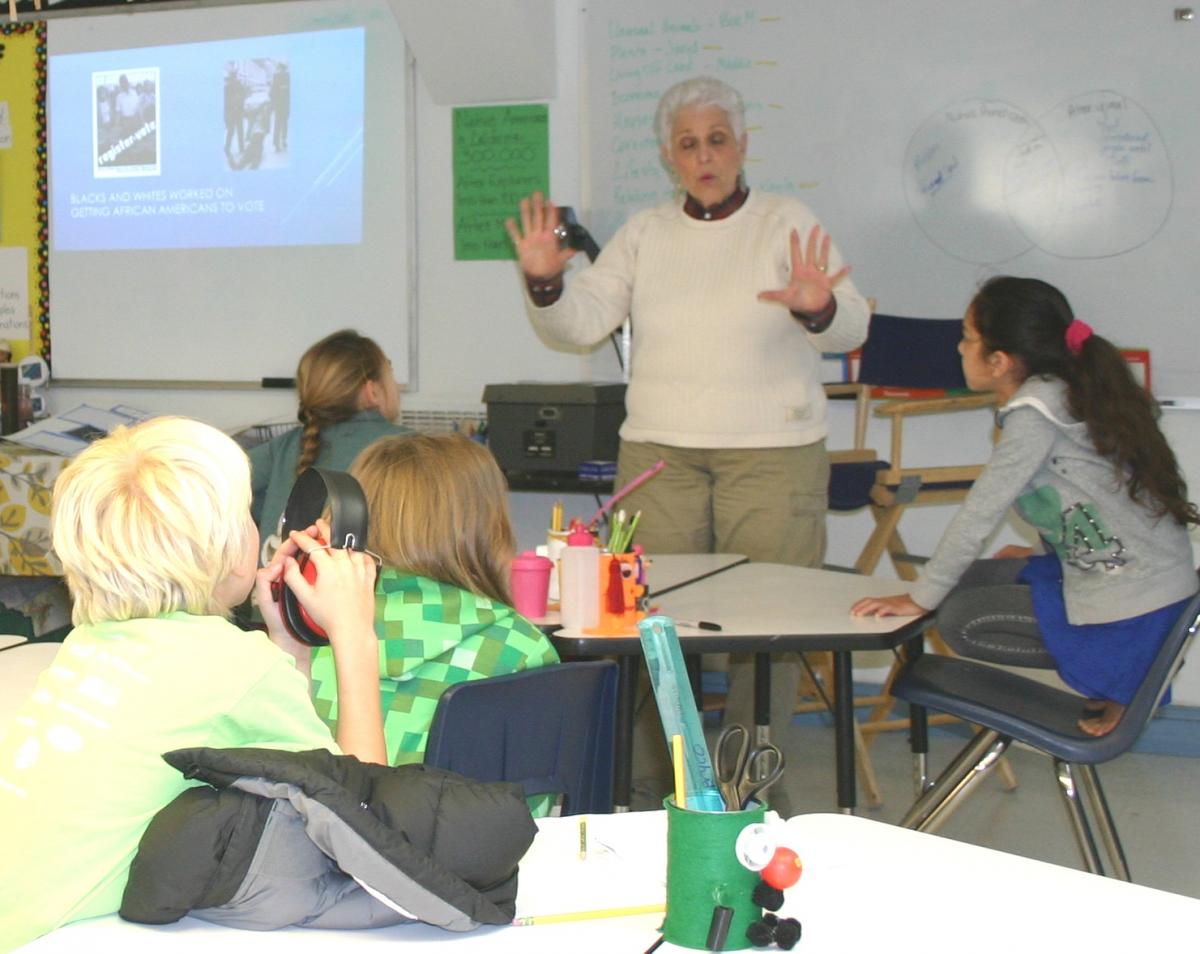 Matteucci described a personal ‘silent protest’ in support of civil rights during a visit to a Woolworth’s lunch counter when she lived in the South in 1965. While black citizens were not allowed to eat at the lunch counter, they could sit at tables in the back of the diner. Matteucci said she passed by the empty stools on either side of the white patrons seated at the lunch counter, and headed for a table near the back where several black patrons were seated.
Matteucci described a personal ‘silent protest’ in support of civil rights during a visit to a Woolworth’s lunch counter when she lived in the South in 1965. While black citizens were not allowed to eat at the lunch counter, they could sit at tables in the back of the diner. Matteucci said she passed by the empty stools on either side of the white patrons seated at the lunch counter, and headed for a table near the back where several black patrons were seated. ‘I had Linda’s little sister with me,’ said Matteucci. ‘When they saw us coming, a polite black person moved over and made room for us to join them. Behind the Woolworth’s lunch counter was a large mirror on the wall, so our mixed-race table was quite visible to all of the white patrons seated at the lunch counter. It was just one way I could participate in a silent protest.’
Several times during the discussion, the point was made that the struggle for civil rights continues today — and continues to have an impact on people’s lives.
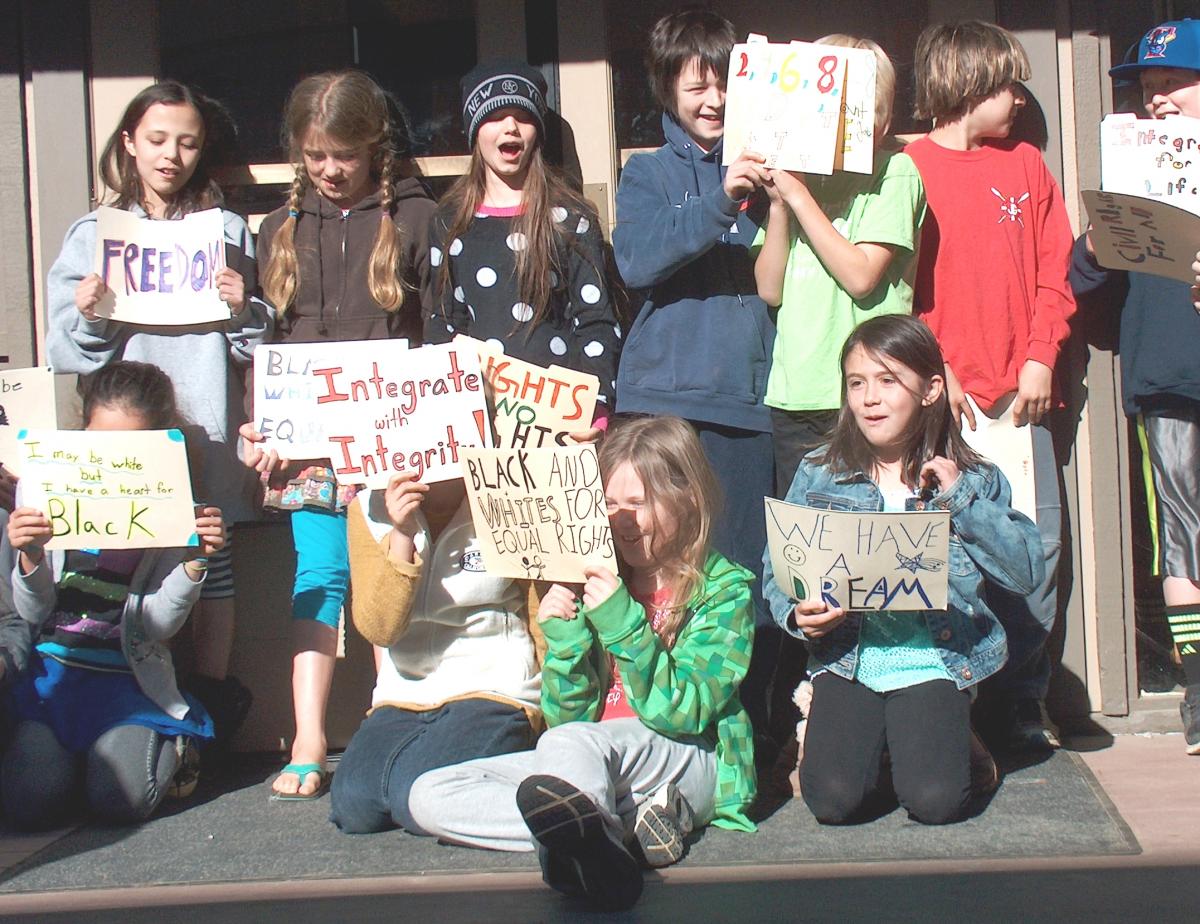 ‘It’s still happening,’ agreed nine-year-old Grace Timan, nodding her head, ‘even to our President. I heard somewhere that a man went up and asked President Obama ‘what’s it like to be the last black president’? I just can’t believe it.’
‘It’s still happening,’ agreed nine-year-old Grace Timan, nodding her head, ‘even to our President. I heard somewhere that a man went up and asked President Obama ‘what’s it like to be the last black president’? I just can’t believe it.’‘It’s up to all of us,’ agreed classmate Ben Pearson. ‘We have to be strong and keep pushing for what is right.’
####
Contact: Leigh Ann Clifton, Marketing & Communications,
Nestled among the redwoods on 355 mountaintop acres, Mount Madonna is a safe and nurturing college-preparatory school that supports students in becoming caring, self-aware and articulate critical thinkers, who are prepared to meet challenges with perseverance, creativity and integrity. The CAIS and WASC accredited program emphasizes academic excellence, creative self-expression and positive character development. Located on Summit Road between Gilroy and Watsonville.
